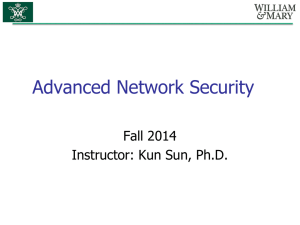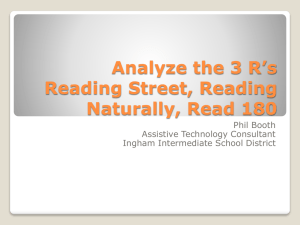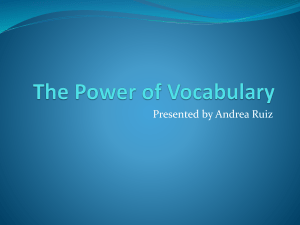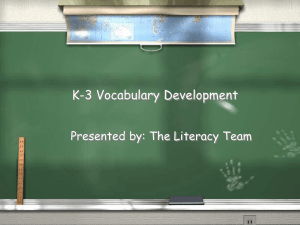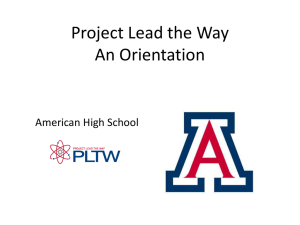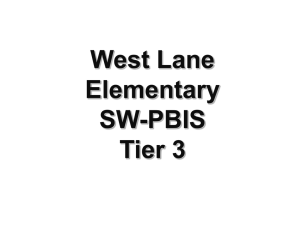RTI - Minnetonka Public Schools
advertisement
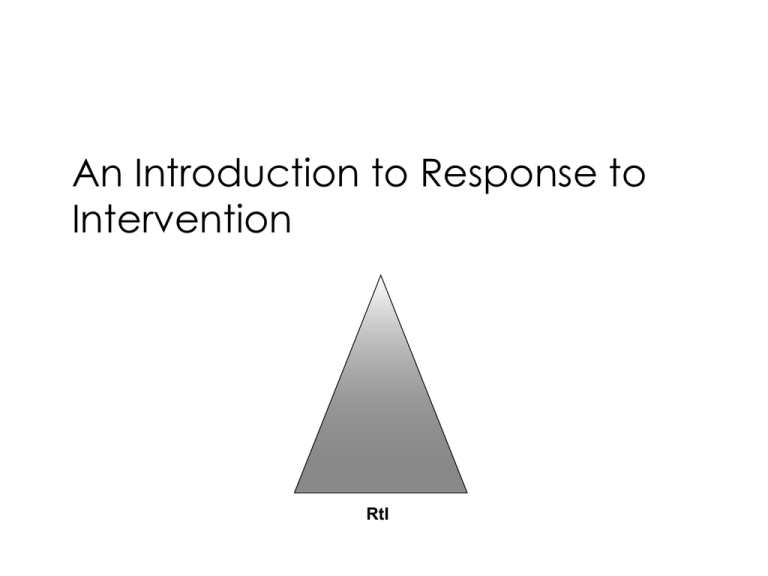
An Introduction to Response to Intervention RtI Definition of RtI • The practice of high quality instruction and interventions matched to student need, monitoring progress frequently to make changes in instruction, and applying child response data to important educational decisions. Continuum of School-wide support Tier 3 Tier 2 Tier 1 RtI an integrated System Instruction How do I know a student needs additional support? Use the data. • NWEA-below 40th percentile for grade level • Kindergarten assessment-recognize12 or less letters at beginning of year • F and P-At these levels or below • 1st Grade-Level A/B • 2nd grade-Level I • 3rd grade-Level M • 4th grade-Level P • 5th grade-Level S • ORF-below 40th percentile (CBM) Oral Reading Fluency (CBM-R) • Student reads a passage aloud for one minute • Count the number of words read and the errors • Subtract errors from total words to get Words Read Correct. • Median WRC from 3 passages used for benchmark testing of all students • 1 passage used for frequent progress monitoring • Strong correlations with state tests (0.7 – 0.75 range) Example of a Single Student progress monitoring Graph Performance of a Single Class Instructional Recommendations for that same class 6 students now are performing below grade level The NWEA scores for the same class 4 students performing below grade level AIMSweb Test of Early Literacy (TEL) • Letter Naming Fluency • Letter Sound Fluency • Phoneme Segmentation • Nonsense Word Fluency Response to Intervention-Time, group size and Frequency Consideration for SPED Assessment 3 times per week for 30 minutes individually 4 times per week for 30 min. with 4-5 other students Our Pilot with RtI Fall 2007 • 120 students identified as Tier I (17% of Mwta) • After 6 weeks of intervention – data showed that 47% of these students were on target to meet grade level expectations. • 53% of the 120 moved on to Tier II Spring 2008 • 9% of students are in Tier II • 3% of students are in Tier III Progress Monitoring for Tier II • Aimsweb • Reading specialist works with students and meets frequently with teacher • After 9-12 weeks -then decision for next step is made based on Aimsweb growth – Continue Tier II – Return to Tier I – Add Tier III if…. • Growth rate below Aimline on Aimsweb If Tier II is successful • Return to Tier 1-classroom interventions • Progress monitoring every other week for 12 weeks • After 12 weeks monitor monthly If Tier II is not successful, Add Tier III • Grade level problem solving team (reading specialists, classroom teacher, other support staff) make determination after 9-12 weeks of Tier II • If growth is below the aimline for Aimsweb recommend Tier III. Tier III Progress Monitoring 1. Conduct 1 reading probe per week with Aimsweb 2. After 9-12 weeks meet with grade level problem solving team to review the progress and determine next steps. If Tier III is successful • Stay with Tier II for 9-12 weeks and use weekly progress monitoring • If successful in Tier II return to Tier I and continue progress monitoring every other week for 12 weeks, then monitor monthly



